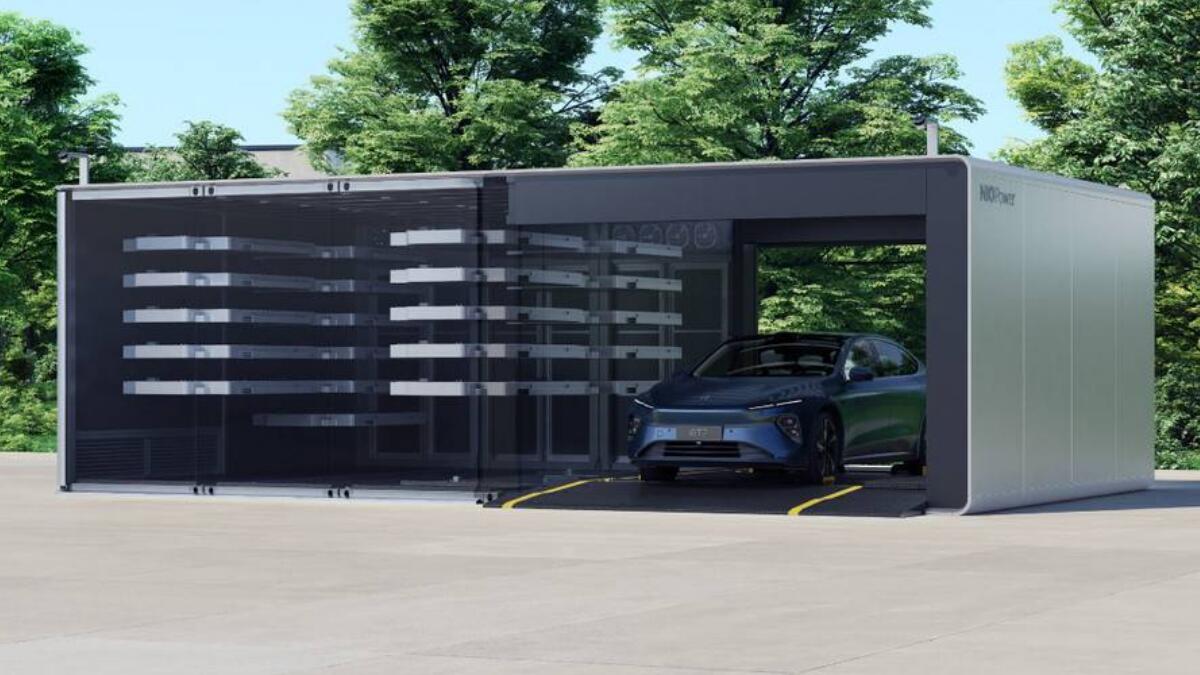CNOOC -- one of China's three largest oil giants -- said it will provide Nio with reliable sites, technology and service support to fuel the rapid growth of its charging and battery swap network.

(Image credit: Nio)
Nio (NYSE: NIO) has entered a strategic partnership with China National Offshore Oil Corporation (CNOOC) at a time when the oil giant, like its other local peers, is seeking to transform itself into an integrated energy service provider.
On June 27, Nio's energy business unit, Nio Power, signed a strategic cooperation framework agreement with CNOOC Refinery, CNOOC's petroleum refining subsidiary, to jointly build charging and battery swap infrastructure, the electric vehicle (EV) maker said yesterday.
Wang Weimin, chairman and general manager of CNOOC Refinery, and Qin Lihong, co-founder and president of Nio, attended the signing ceremony in Hefei, Anhui province, and remotely witnessed the launch of the first joint battery swap station between the two in Huizhou, Guangdong province.

Wang visited one of Nio's manufacturing sites and a Nio House in Hefei and had a hands-on experience at a battery swap station, according to an announcement from Nio.
Guided by China's carbon peak and carbon neutral goals, CNOOC is actively building integrated energy sites and will gradually transform from an energy producer to an integrated energy service provider, Wang said.
CNOOC will next provide Nio with reliable sites, technology and service support to facilitate the rapid development of its charging and battery swap network, according to Wang.
CNOOC is China's largest operator of offshore oil and gas production, ranking 65th on the Fortune 500 for 2022 with $127 billion in revenue, according to the Fortune website.
CNOOC Refinery is CNOOC's business in charge of refining and chemical sales, with assets of more than RMB 100 billion, according to Nio's announcement.
Currently, Nio and CNOOC Refinery are already working together in several Chinese provinces and cities, which will provide users with a more convenient energy replenishment experience, the announcement said.

In 2020, China announced its goal of achieving carbon peak by 2030 and carbon neutrality by 2060. Since then, controlling carbon emissions has become a major concern for Chinese society, especially in the energy sector.
In addition to CNOOC, the other two largest Chinese oil giants, Sinopec and China National Petroleum Corp (CNPC), have both made it clear that they will transform into integrated energy service providers.
Sinopec appears to be more aggressive in this transformation, stating in March 2021 that it will aim for carbon neutrality 10 years ahead of the national commitment, with net zero emissions as its ultimate goal.
As part of achieving that goal, Sinopec signed a strategic partnership agreement with Nio on April 15, 2021, to co-build charging and battery swap infrastructure.

At that time, the first Nio second-generation swap station was opened in a Sinopec gas station area in Beijing in the presence of both parties.
On April 15 of this year, the second anniversary of their partnership, the number of charging and battery swap stations they have built together reached 251, according to information previously shared by Nio.
These stations include 102 battery swap stations, 121 supercharging stations and 28 destination charging stations, covering 27 provincial administrative regions and 89 cities.
On November 24, 2021, the first two battery swap stations built by Nio and CNPC were put into operation, marking the official result of their cooperation.
In addition to its partnership with the Chinese oil giants, Nio also signed a strategic partnership agreement with Shell, the world's largest gasoline retailer, in November 2021 to collaborate on charging and battery swap facilities in China and Europe.
The two would jointly install 100 swap stations in China by 2025, according to a statement at the time.
On August 1, 2022, the first Nio-Shell partnership battery swap station and supercharger station went into operation in Xiamen, Fujian province, in southeastern China.
On May 16 of this year, Nio said the first battery swap stations it built with Shell in Europe went live in the Netherlands.
To date, Nio has 1,511 battery swap stations in China and 1,457 supercharging stations offering 7,176 supercharging piles, according to data monitored by CnEVPost.
In Europe, Nio has 17 battery swap stations and 8 charging stations.
Nio reaches 1,500 swap stations in China as it aims for 2,300 by year-end
The post Nio partners with Chinese oil giant CNOOC on power-up network deployment appeared first on CnEVPost.
For more articles, please visit CnEVPost.
















